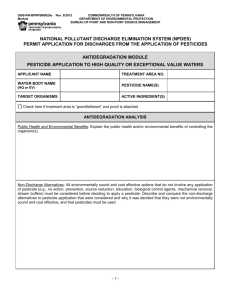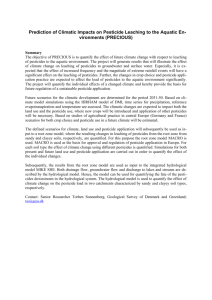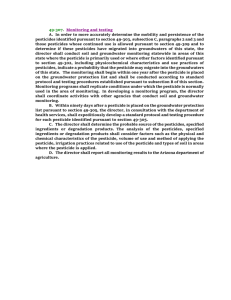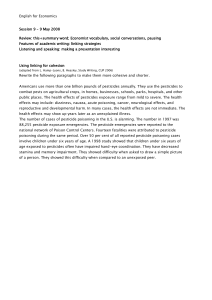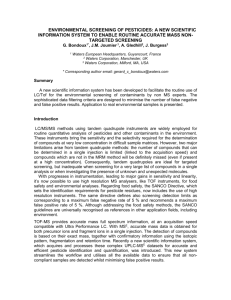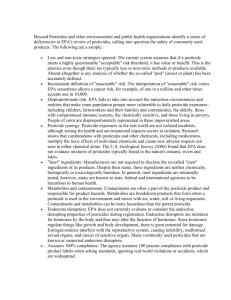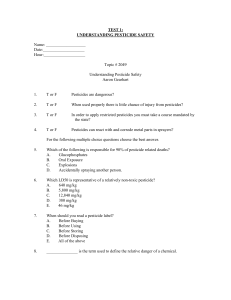Summary
advertisement
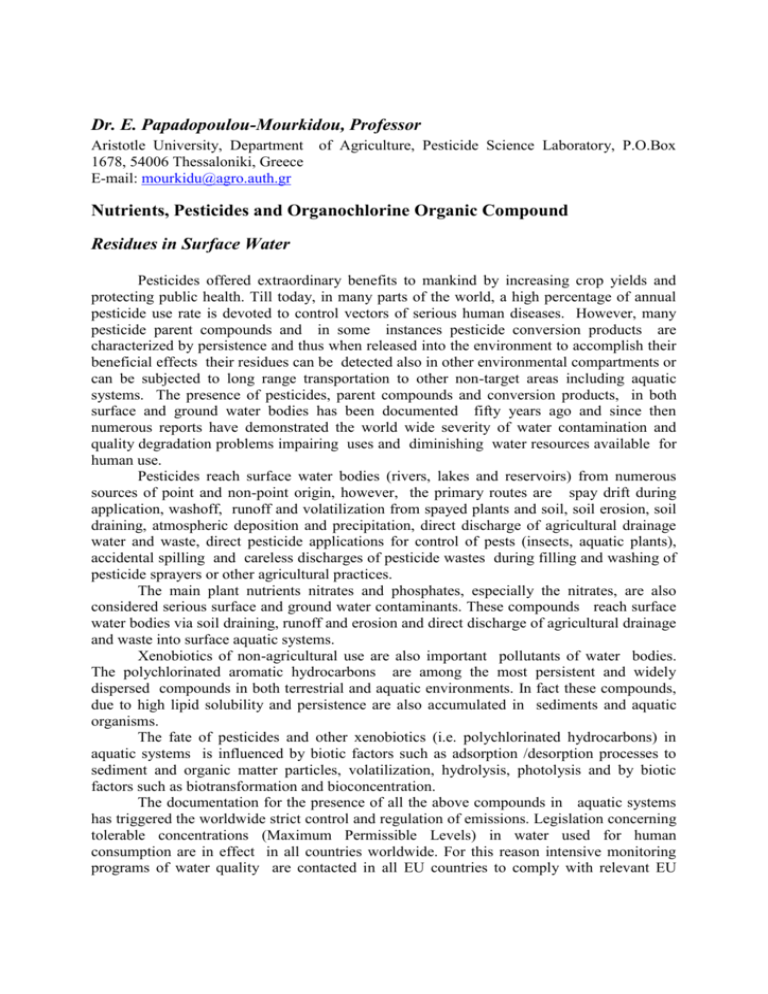
Dr. E. Papadopoulou-Mourkidou, Professor Aristotle University, Department of Agriculture, Pesticide Science Laboratory, P.O.Box 1678, 54006 Thessaloniki, Greece E-mail: mourkidu@agro.auth.gr Nutrients, Pesticides and Organochlorine Organic Compound Residues in Surface Water Pesticides offered extraordinary benefits to mankind by increasing crop yields and protecting public health. Till today, in many parts of the world, a high percentage of annual pesticide use rate is devoted to control vectors of serious human diseases. However, many pesticide parent compounds and in some instances pesticide conversion products are characterized by persistence and thus when released into the environment to accomplish their beneficial effects their residues can be detected also in other environmental compartments or can be subjected to long range transportation to other non-target areas including aquatic systems. The presence of pesticides, parent compounds and conversion products, in both surface and ground water bodies has been documented fifty years ago and since then numerous reports have demonstrated the world wide severity of water contamination and quality degradation problems impairing uses and diminishing water resources available for human use. Pesticides reach surface water bodies (rivers, lakes and reservoirs) from numerous sources of point and non-point origin, however, the primary routes are spay drift during application, washoff, runoff and volatilization from spayed plants and soil, soil erosion, soil draining, atmospheric deposition and precipitation, direct discharge of agricultural drainage water and waste, direct pesticide applications for control of pests (insects, aquatic plants), accidental spilling and careless discharges of pesticide wastes during filling and washing of pesticide sprayers or other agricultural practices. The main plant nutrients nitrates and phosphates, especially the nitrates, are also considered serious surface and ground water contaminants. These compounds reach surface water bodies via soil draining, runoff and erosion and direct discharge of agricultural drainage and waste into surface aquatic systems. Xenobiotics of non-agricultural use are also important pollutants of water bodies. The polychlorinated aromatic hydrocarbons are among the most persistent and widely dispersed compounds in both terrestrial and aquatic environments. In fact these compounds, due to high lipid solubility and persistence are also accumulated in sediments and aquatic organisms. The fate of pesticides and other xenobiotics (i.e. polychlorinated hydrocarbons) in aquatic systems is influenced by biotic factors such as adsorption /desorption processes to sediment and organic matter particles, volatilization, hydrolysis, photolysis and by biotic factors such as biotransformation and bioconcentration. The documentation for the presence of all the above compounds in aquatic systems has triggered the worldwide strict control and regulation of emissions. Legislation concerning tolerable concentrations (Maximum Permissible Levels) in water used for human consumption are in effect in all countries worldwide. For this reason intensive monitoring programs of water quality are contacted in all EU countries to comply with relevant EU Directives and in some countries measures to control pollution sources and protect water resources have been already enforced. Data derived from the EU surface water monitoring programs will be discussed.
